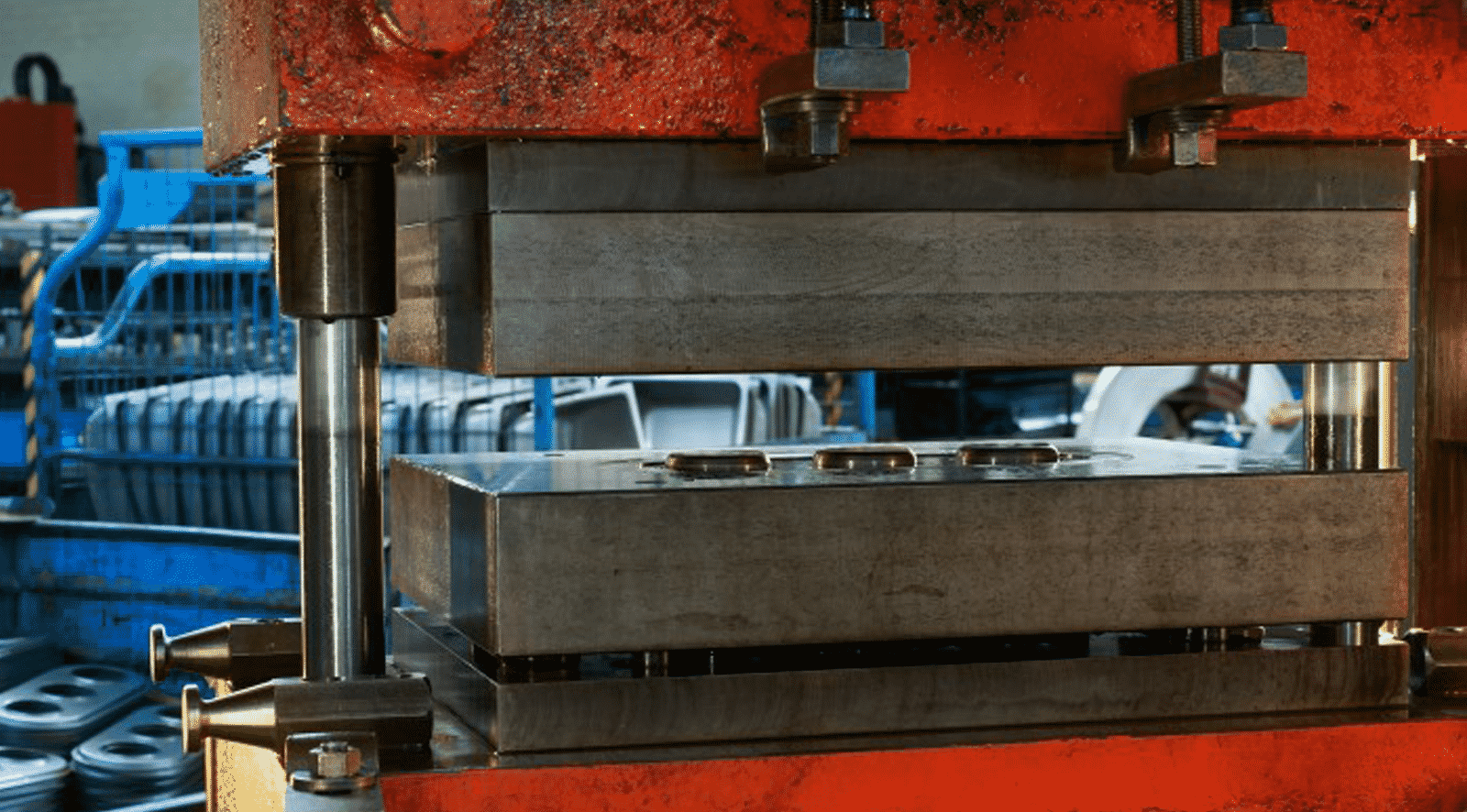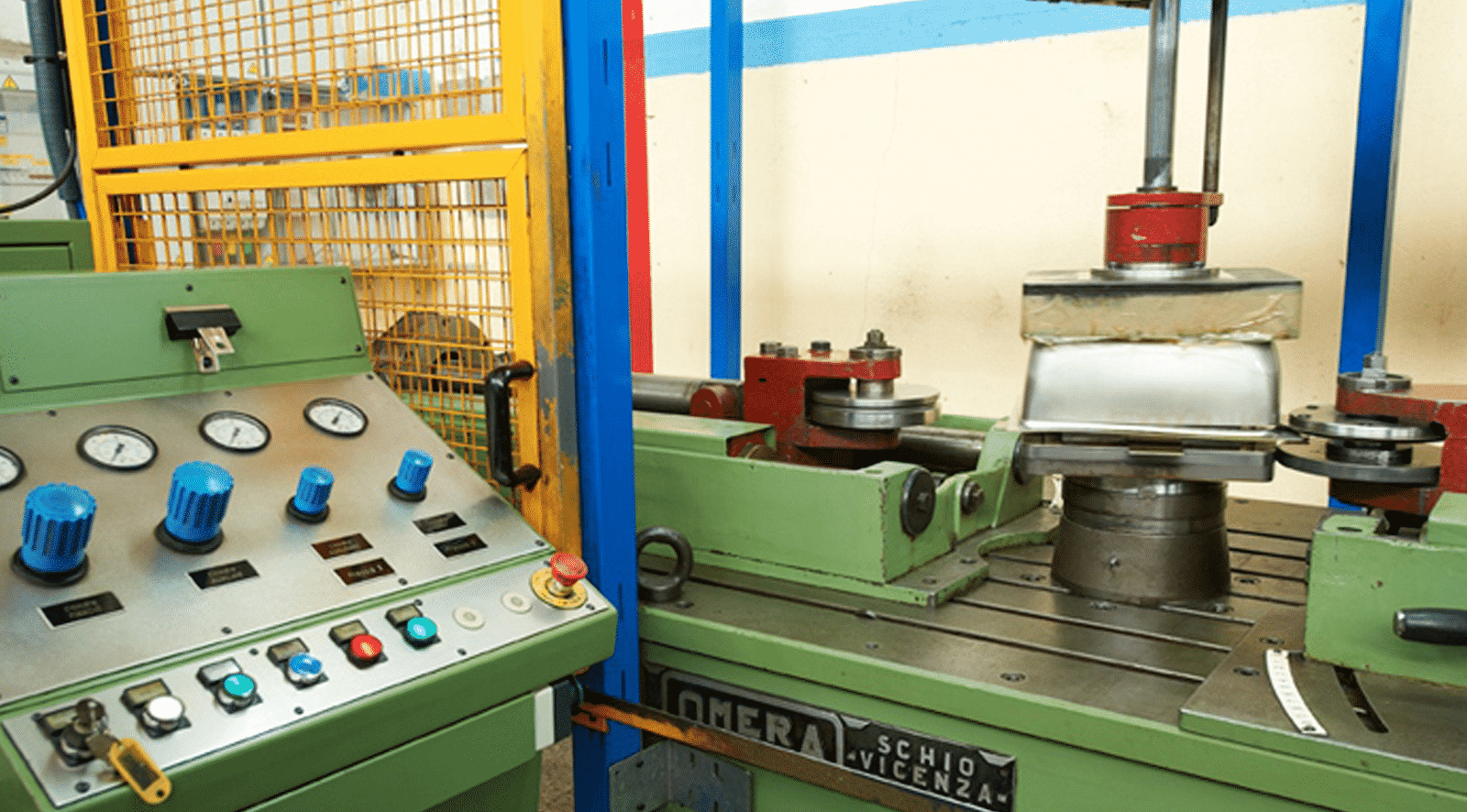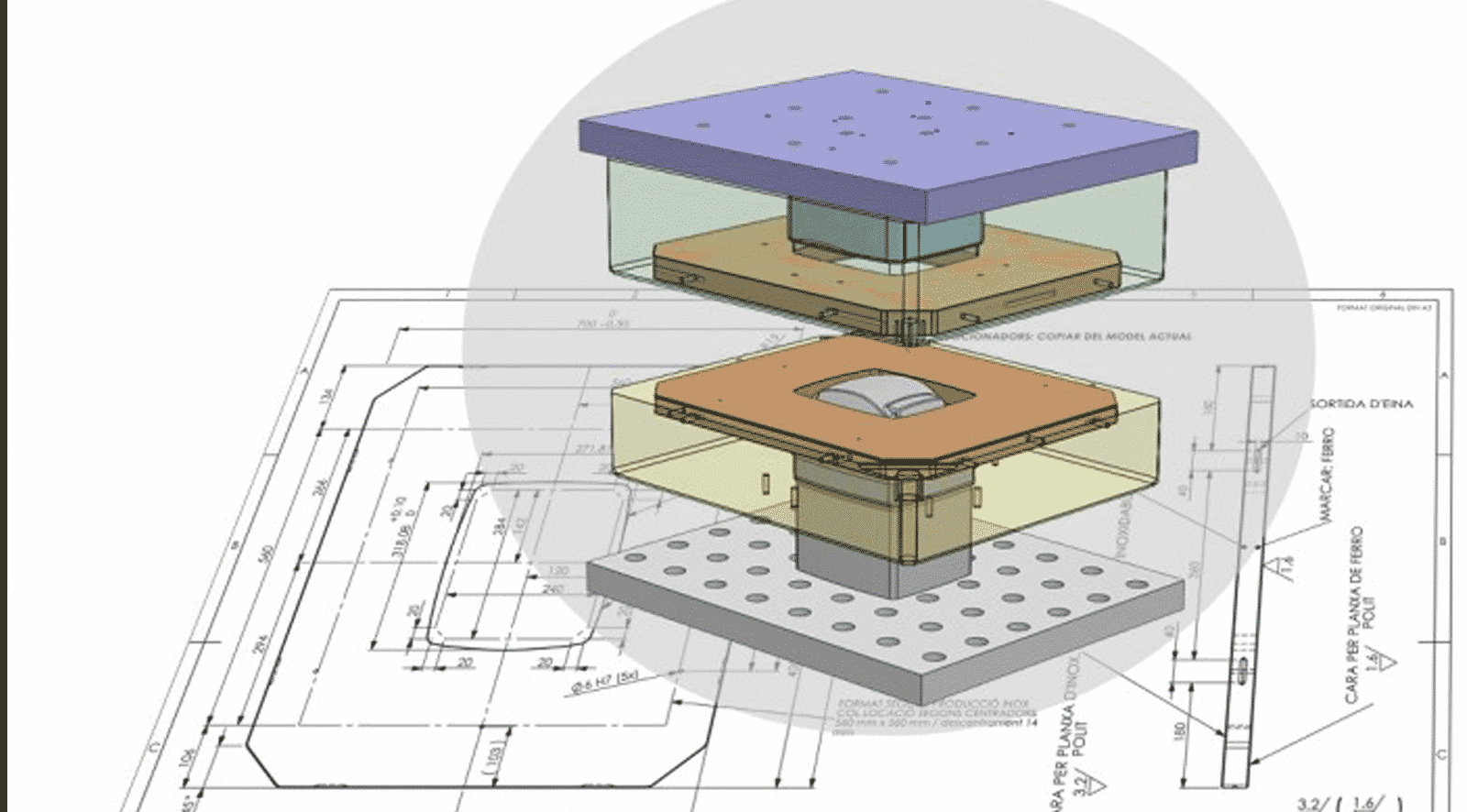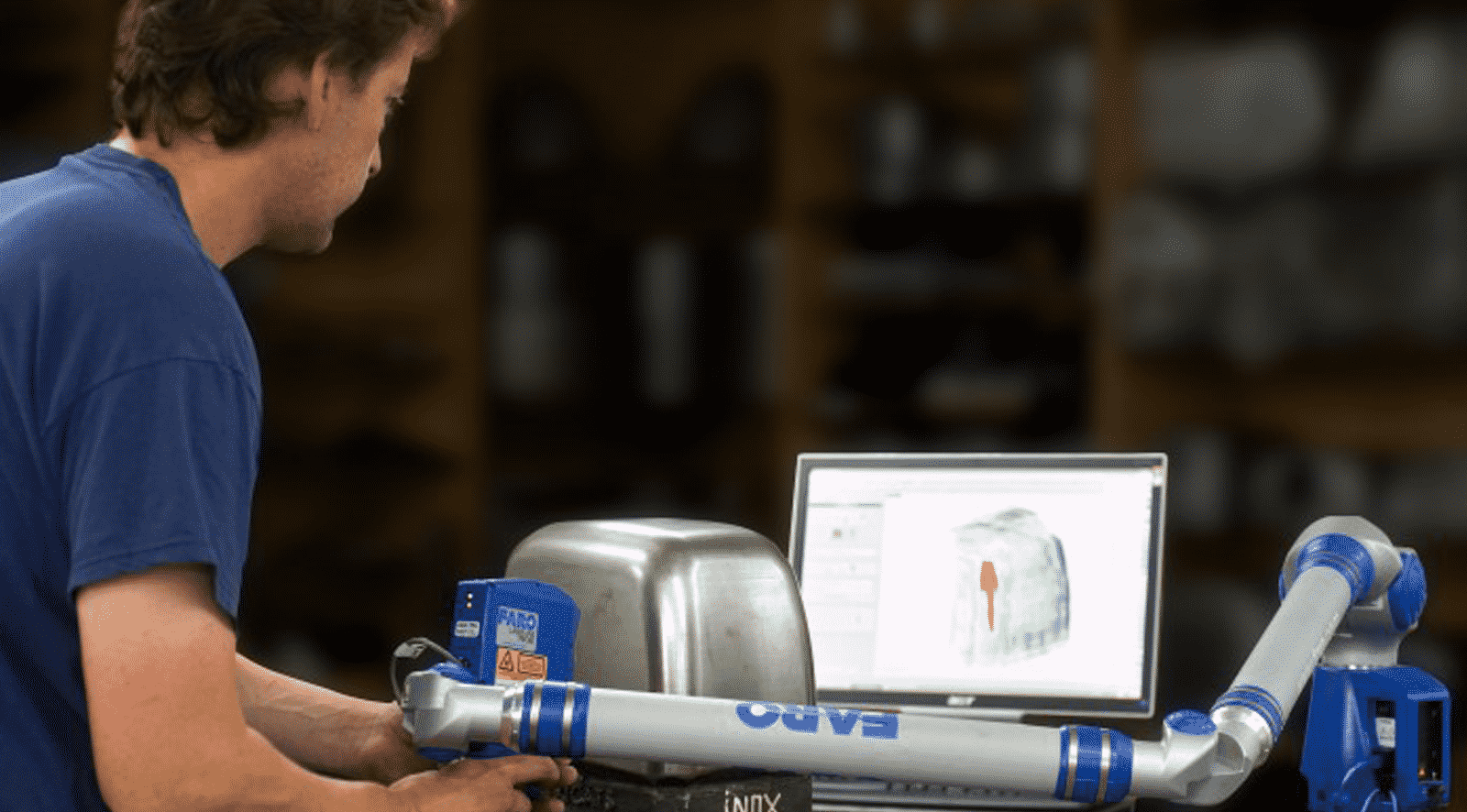Matriçats
Company dedicated to the production of metal sheet metal drawing parts. We carry out metal shaping projects to make parts with quality finishes. We have presses, 3d laser and collaborative robotics.
Contact us
Call us: +34 972 492 010
Email: info@matricats.com
Visit us : c / Pirineus, 170, Pol. Ind de Celrà, 17460 Celrà (Girona, Spain)
Product and Process DESIGN
We create or adapt the design of the product under study, always looking for the optimal compromise between the requirements and the minimization of manufacturing costs. Based on the design agreed with the client, we develop the manufacturing process.
SERIAL PRODUCTION
We have exclusive productive means within the sector of deep drawing of stainless steel and other metals. Prepared for short, medium or long series. Hydraulic and mechanical presses (tonnage up to 2.000t, table dimensions up to 2.600mm). Special capacity for deep drawing up to 600mm and thickness up to 20mm. Auxiliary technologies such as 3D laser cutting and welding stations, conventional welding stations and automated polishing and finishing stations.
INDUSTRIALIZATION of Process, we develop the manufacturing process.
We have a workshop with the necessary resources to industrialize the manufacturing process, where the tools and dies included in the process design are built and adapted. This area also enables the subsequent maintenance of the tools, dies, automatisms and special machines.
What do we offer you?
Means for manufacturing drawing parts

Hydraulic and mechanical presses
special for deep drawing + stamping + cutting

3D laser cutting and welding stations
We have three 3D laser cutting and welding stations

Automatisms and welding equipment
Our customers can have a park of presses

Rolling, cutting, edge rolling and multi-processing operations

Finishing, CNC polishing and degreasing stations
product finish requirements

CAD / CAE / CAM / CNC systems
We have tools for product engineering.

CNC and conventional lathes and milling cutters
With the help of our tool shop we offer the possibility

Automatisms and special machines
specific applications

3D laser digitization equipment
Reverse engineering and dimensional control
About us
Matriçats SL is a company that since 1970 has been subcontracting for the manufacture of all kinds of parts from metal sheets, especially stainless steel.


Cold drawing
When making parts with hydraulic presses and custom-made dies, we are specialists.
Together with the client we can study the thickness of the materials and carry out the necessary tests to obtain a part that meets expectations.
Video presentation
Here you can see in 2 minutes the design, drawing and 3d laser cutting processes that we can offer you to carry out your metal parts projects.
Recent posts
Information
FAQs
What tools are used in metal drawing?
- The main elements for drawing are:
- Sheet metal and lubricant.
- The tools
- Matrixes
- The press (better if it is hydraulic).
How is deep drawing performed?
-Although the process is usually known mostly by cylindrical shapes. There can also be shapes of all kinds, such as a cube and other primitive shapes. But generally with an open face or surface to be the base of the punch.
-A generally lubricated sheet is available (to avoid seizure), between the male and the female (punch and die). And then a movement or journey is made until the sheet takes the shape of the punch, thus forming the part.
The result is hollow pieces. In the form of a container.
Who can make deep drawing pieces?
Stamps or stuffers are those who generalize this technique. It usually involves high knowledge of tooling (craft of tooling construction), which is learned through years and experience. This is passed down from generation to generation. Even today relatively little bibliography appears. Although there are already some computer simulation programs that help predict some results.
What are the processes to manufacture series of drawing pieces?
Whenever the situation permits, an order similar to the following should be followed:
- Study and optimize the design of the piece. By those responsible for tooling or who should produce it.
-Analyze the market and demand. It is made to know the quality and finish requirements, aspects, tolerances and quantity of parts.
- Assess whether the part should be assembled with others and its intrinsic needs.
-Determine the means and materials. For example if it must be aluminum, carbon steel or stainless steel. Or to know the type of manufacturer's presses (they can condition the tools depending on the types and tonnages). Also know the years that the manufacturing possibility must remain active. This data can be interesting to calculate the tooling project.
Can a design be made from an existing part?
Yes, from reverse engineering and a laser sensor. The design of the piece can be done.
On the type of material, which is better? Sheet steel or stainless steel?
It essentially depends on the needs of the product in its cycle of use. It can usually be related to the sector. The thicknesses generally go from 0.5 mm to 4 or 5 mm. Although the average thickness of the materials are centered between 1 and 3mm.
-Carbon Steels: In general all sectors, the material is the one that has the best relation in raw material cost. And it has a good mechanical resistance of the piece. In most cases it must have a subsequent protective treatment, such as paints, lacquers, enamels, galvanized, etc., to minimize corrosion or oxidation.
-Stainless steels. Of more difficult conformation, they offer superior mechanical capabilities to the first 2. Although it may be more expensive, the needs for subsequent protective treatments can be minimized or eliminated.
-Aluminum: Perfumery, aeronautics, automotive, lighting. Since it has light weight, reasonable cost, reasonable capacity or resistance of the piece.
-Special or high resistance steels. It is worth mentioning part. Whether it is cold or hot forming. Some specials from the automotive sector are hot formed simultaneously. They are generally expensive processes.
What are the advantages of a deep-drawn part compared to one made of cast iron?
Usually the delivery times in its manufacturing process are much faster. And the costs of execution much lower, since the finished in drawn pieces can be almost definitive with few or no reprocesses. However, in cast iron, having additional finishes, reprocessing is common, thus increasing costs. Also the structural capacities of drawn pieces can be greater to equal weight. In general the embedded pieces are much lighter.
We work together?
Start your project
Send your CAD design of the piece you want to make and you will have a study without commitment.
